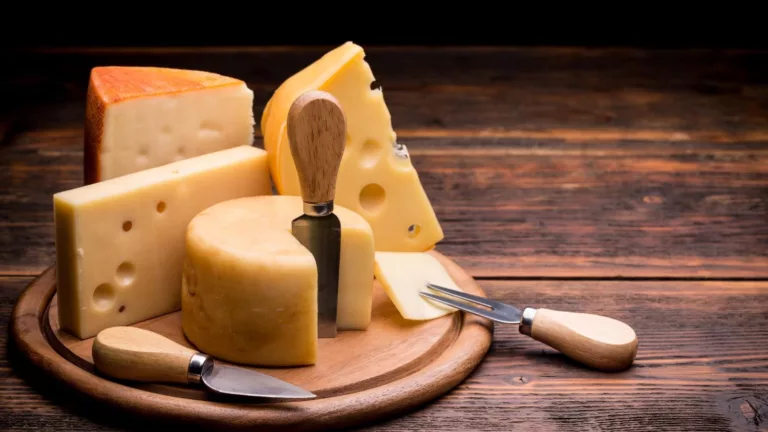Have you ever wondered about the fascinating process behind the creation of the delectable cheese you love? The art of cheesemaking dates back thousands of years and has evolved into a diverse array of flavors and textures. From creamy Brie to tangy cheddar, cheese-making is an art that marries science with passion. In this article, we will take you on a captivating journey through the cheese-making process, exploring the steps of how cheese is made in transforming milk into this much-loved dairy delight.
1. A Moo-ving Beginning: Milk Selection
To produce top-quality cheese, the journey commences with one of the primary ingredients – milk. The type of milk chosen significantly influences the taste and texture of the final product. Here are some key considerations during milk selection:
- Moo-tastic Choices: Cow’s milk is the most commonly used due to its mild flavor and consistent composition. However, cheese enthusiasts often experiment with milk from goats, sheep, and even buffalo for unique tastes.
- Pasture Power: It is crafted from milk sourced from pasture-grazed animals often boasts richer flavors and higher nutritional value.
2. Curdling the Curds: Acidification and Coagulation
Once the milk is collected, the next step is to kick-start the it-making magic. Acidification and coagulation are pivotal stages in this process:
- Culture Club: Cultures, typically composed of friendly bacteria, are introduced to the milk. They feast on lactose, converting it into lactic acid, giving the cheese its distinct tanginess.
- Enzyme Action: To further aid in coagulation, enzymes such as rennet are added. Rennet helps solidify the milk by encouraging the proteins to bond together.
3. Cut, Stir, and Cook: Curd Formation
As the curds begin to take shape, cheesemakers skillfully cut, stir, and heat the curds to reach the desired consistency:
- Curds on the Cutting Edge: The curd mass is cut into smaller pieces to release whey, the liquid part of the milk.
- Stirring the Pot: Gentle stirring prevents the curds from matting and helps to control their moisture content.
- Heat is On: Gradual heating influences the final texture, with higher temperatures resulting in firmer cheeses and vice versa.
4. Whey to Go: Draining and Pressing
With curds formed, it’s time to bid farewell to the whey and begin shaping the cheese:
- Drain the Day Away: The curds are separated from the whey by draining them in molds. This phase significantly impacts the final moisture level and texture.
- Pressing Matters: Applying pressure to the curds expels any remaining whey and consolidates the cheese mass. The duration of pressing varies, affecting the density of the cheese.
5. Salt of the Earth: Brining and Salting
Salt plays a vital role in both flavor enhancement and preservation:
- Taking the Plunge: Some cheeses are soaked in brine, a saltwater solution, to infuse them with unique flavors and form a protective rind.
- Dry and Delicate: For other cheeses, dry salting involves sprinkling salt directly onto the surface. This method facilitates gradual absorption of the salt.
6. Age Before Beauty: Ripening and Maturation
As the saying goes, “Age before beauty,” and this holds true for cheeses too:
- Room with a View: The cheese is transferred to a cheese cave or aging space, where environmental factors like temperature and humidity work their magic on the developing flavors and textures.
- Patience is a Virtue: The duration of aging varies significantly, ranging from weeks to years. Longer aging typically results in sharper and more complex flavors.
7. The Art of Affinage: A Finishing Touch
While some cheeses are enjoyed fresh, many undergo an extra step of refinement known as affinage:
- Mastery of Affinage: Expert affineurs oversee this stage, brushing, washing, or turning the cheese regularly to encourage proper development and rind formation.
- Art Meets Science: Affinage showcases the harmonious fusion of craftsmanship and scientific precision in cheese-making.
8. The Finale: Unwrapping the Cheese
The cheese-making process culminates with the unveiling of the finished product:
- Sensory Delights: Cutting into the cheese reveals its inner beauty, with textures ranging from oozy and soft to crumbly and hard.
- A Symphony of Flavors: Each cheese variety boasts a unique flavor profile that tantalizes the taste buds, enticing us to explore the world of artisanal cheeses.
Conclusion
Next time you savor a slice of cheese on a cracker or melt it atop a sizzling burger, remember the captivating journey it underwent. The art of cheese-making, a delightful combination of science and craftsmanship, brings us an exquisite array of flavors and textures to cherish. So, the next time someone asks, “How is cheese made?” You may tell them the tale of this classic dairy treat!









